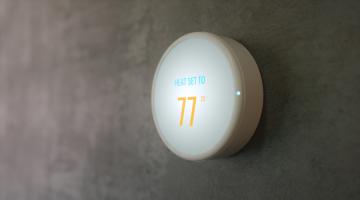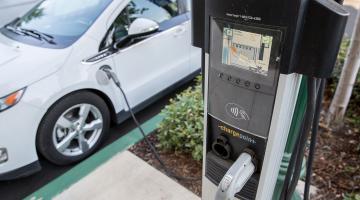California is moving to a 100 percent clean grid and is building more solar, wind, and other renewables to reduce pollution, mitigate climate change impacts, and stabilize energy costs. However, many renewables produce varying amounts of power throughout the day. To ensure grid reliability, power available from renewable resources needs to match the amount of electricity used and time used.
The most cost-effective way to accomplish this is through automated load flexibility. Grid-scale renewable generation or storage, such as batteries, are important strategies to decarbonize the state but are also more expensive, take more time to plan, construct, and run, and require more space to build. Load management can provide substantial electricity cost savings to customers who opt-in to automated load shifting as well as to other consumers who do not have to share the costs of more expensive alternatives.
Electricity customers can sign up for demand flexibility programs that communicate grid signals to devices that shift or reduce electricity usage via automation devices. Grid signals include prices and emissions, and automation devices include smart thermostats, advanced pool pump controls, smart EV chargers, home batteries, and advanced water heater controls.
In a home during an extreme heat event, load flexibility will adjust appliance use with little to no intervention to keep occupants comfortable while also providing the grid the relief needed to avoid rolling blackouts.
For example, if prices are high, power plants are emitting more greenhouse gases, or the state independent operator has issued a flex alert, the smart thermostat will automatically adjust. It will change settings to cool early and set programmed temperatures higher during the most strained part of the day. At the same time, connected water heaters will heat water early and store it for later use.
When combined with renewable energy, grid-scale storage, and load flexibility, the grid will be stronger, more reliable, and more resilient. For now, fossil-fuel power plants are still being used to fill the state’s electricity needs when renewables’ capacity wanes. When enough homes and businesses participate in automated load flexibility, the need for fossil-fuel generation will reduce.
The California Energy Commission (CEC) is working on a variety of projects to encourage and improve load flexibility.
Energize Innovation
Discover the latest updates from CEC-funded projects helping California transition to a low-carbon, resilient, and equitable energy economy. Use the search function to find load flexibility related research and development projects. Energy Innovation website.
Demand Response
The California Public Utilities Demand Response webpage provides information and links to information about the investor-owned utilities’ demand response programs.





